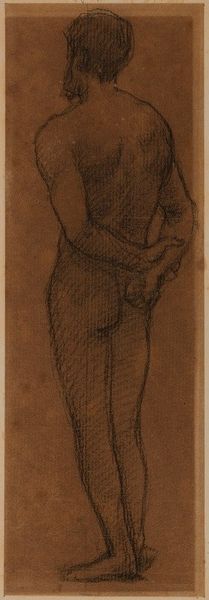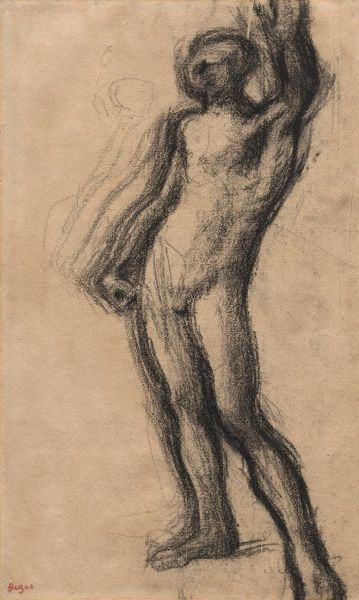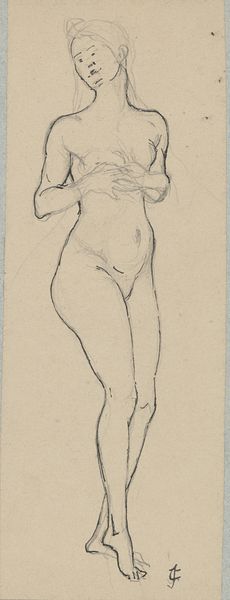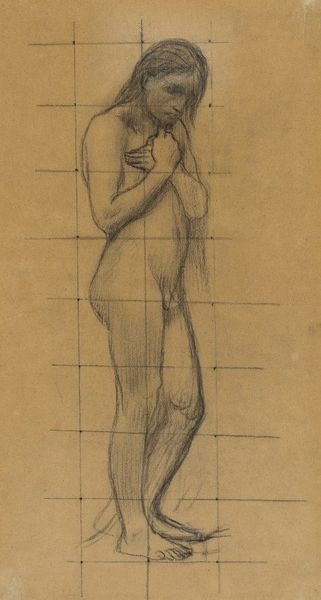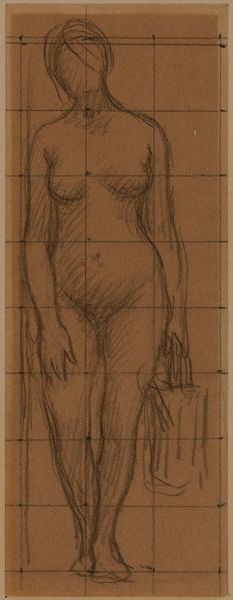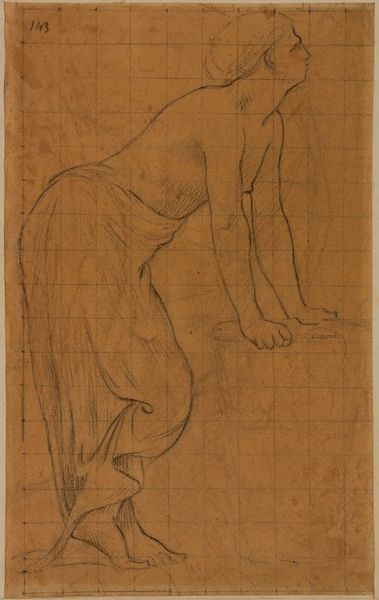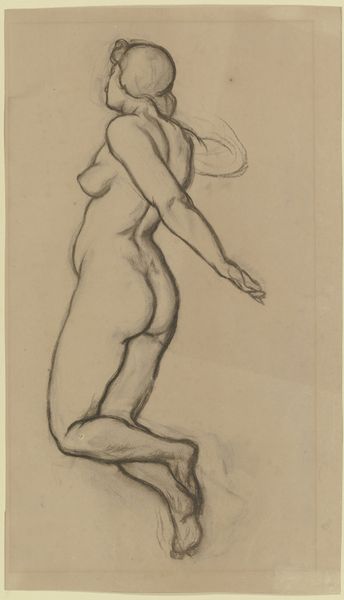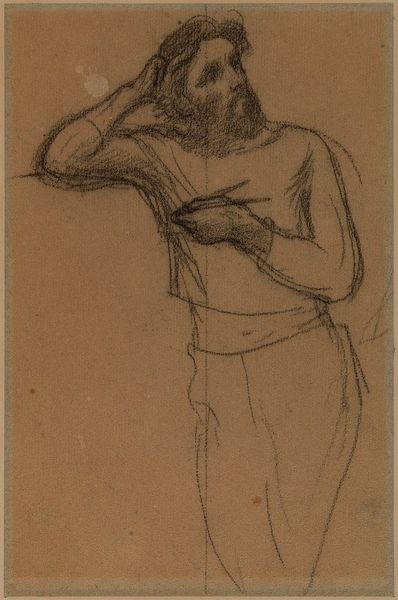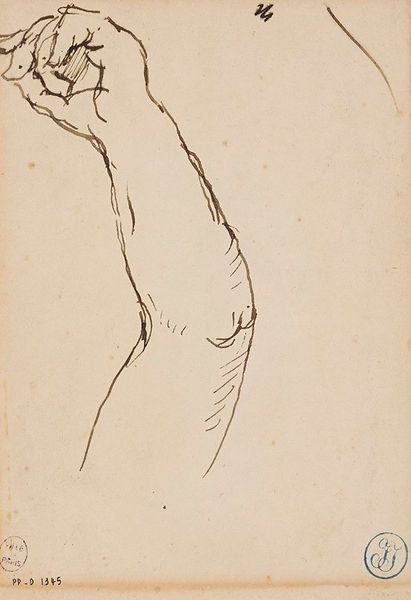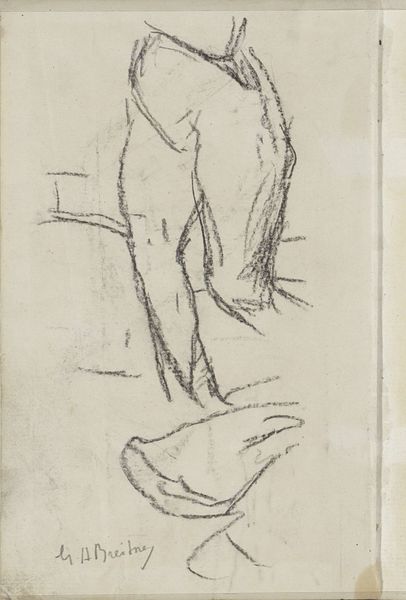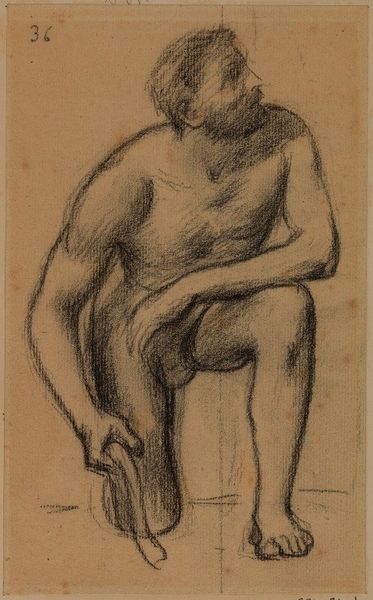
drawing, pencil
#
drawing
#
figuration
#
pencil
#
academic-art
#
nude
#
realism
Copyright: Public Domain: Artvee
Editor: Here we have "Femme nue agenouillée," a pencil drawing by Pierre Puvis de Chavannes, created between 1874 and 1878. It’s a strikingly simple nude figure, but something about the medium and the sketch-like quality feels… unfinished. What do you see in this piece, particularly in relation to its historical context? Curator: The roughness you perceive isn't a lack of finish, but a key aspect of understanding it through a materialist lens. It's pencil on paper, humble materials for what could easily have been rendered in oil. Look closely. It's about *process*, not just product. Consider the late 19th century: industrialization rapidly changed artistic production. This drawing rejects that polish, emphasizing the artist's hand. Editor: So, the choice of pencil is a conscious decision against industrial modes? How would this fit in with, say, academic standards of the time? Curator: Precisely! The academic tradition prioritized meticulous finish and illusionism – things mass production could threaten. By using readily available and affordable pencil and paper, de Chavannes questions those boundaries, aligning himself more with labor, everyday materiality, even democratizing art. This work isn’t about surface appearance, but its making, its accessibility, its quiet resistance to a rapidly changing world. Editor: That's a perspective I hadn't considered! So, beyond just the figure, the materials themselves communicate meaning about artistic production at the time. Curator: Yes, precisely. Consider the labor invested, not just the aesthetic ideal. It changes everything. Editor: I’ll definitely be looking at art with new eyes now. Thanks so much for your insight!
Comments
No comments
Be the first to comment and join the conversation on the ultimate creative platform.

